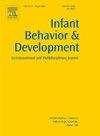Social communication skills profile in infants with sex chromosome trisomy at 12 months of age
IF 1.9
3区 心理学
Q3 PSYCHOLOGY, DEVELOPMENTAL
引用次数: 0
Abstract
Sex Chromosome Trisomy (SCT) conditions are genetic disorders that affect approximately 1:500 children. Although there is considerable variability in phenotype, individuals with SCT have an elevated likelihood, compared to the general population, of developing social deficits and autism spectrum disorder (ASD). Studies report that 10–35 % of individuals with SCT meet criteria for ASD, depending on differences in ascertainment methods and diagnostic criteria. More specifically, ASD prevalence has been estimated at approximately 18 % (range 10–27 %) for XXY, 15 % (10.8–20 %) for XXX, and 30 % (19–43 %) for XYY.. Understanding social development in young children with SCT is important for identifying potential early predictors of later ASD diagnoses and informing early intervention efforts and specific targets for intervention. We describe the social communication profiles of 69 participants with a prenatal diagnosis of SCT (XXY/Klinefelter syndrome=45, XYY=12, and XXX=12) participating in a prospective natural history study at 12 months of age. All participants completed the Autism Diagnostic Observation Schedule- 2nd edition (ADOS-2) Toddler Module (TM) and the Bayley Scales of Infant and Toddler Development- 3rd edition (Bayley-III) associated with their 12-month visit. Supplementary analyses of the impact of wearing masks during COVID19 are included. Participants showed elevated scores on ADOS-2 TM language/ social communication and reciprocal social interaction items including use of gestures, directed babbling/vocalizations towards others and in skills related to initiating social interactions and directing facial expressions toward others. Participants showed few difficulties on items that measured restricted and repetitive behaviors (RRBs). There were no significant differences between SCT subtypes. Lower receptive and expressive language scores on the Bayley-III correlated with more challenges (higher scores) as measured by ADOS-2 TM clinical severity scores. Results show that children with SCT conditions as young as 12 months of age are at increased likelihood for social communication deficits. They also show few RRBs, differentiating them from young children diagnosed with idiopathic ASD. While 45 % had scores in the mild concern range or above, no participants received a clinical diagnosis of ASD. Prospective follow-up of this cohort will detail the developmental profile of social communication skills beyond 12 months of age and identify the proportion and early predictors of those who emerge to meet criteria for a clinical diagnosis of ASD. Results support close monitoring of early social development and provide specific early social development skills to target in future early intervention trials in infants with SCT.
性染色体三体婴儿在12月龄时的社会沟通技巧
性染色体三体(SCT)条件是影响大约1:500儿童的遗传性疾病。尽管在表型上存在相当大的差异,但与一般人群相比,SCT患者发生社交缺陷和自闭症谱系障碍(ASD)的可能性更高。研究报告称,10-35 %的SCT患者符合ASD的标准,这取决于确定方法和诊断标准的差异。更具体地说,据估计,XXY的ASD患病率约为18 %(范围10-27 %),XXX的患病率约为15 %(10.8-20 %),XYY的患病率约为30 %(19-43 %)。了解SCT患儿的社会发展对于识别ASD诊断的潜在早期预测因素以及早期干预措施和具体干预目标具有重要意义。我们描述了69名产前诊断为SCT (XXY/Klinefelter综合征=45,XYY=12, XXX=12)的参与者在12个月大时参加一项前瞻性自然史研究的社会交往概况。所有的参与者都完成了自闭症诊断观察表-第二版(ADOS-2)幼儿模块(TM)和Bayley婴幼儿发展量表-第三版(Bayley- iii)。对covid - 19期间佩戴口罩的影响进行了补充分析。参与者在ADOS-2 TM语言/社会沟通和互惠社会互动项目上的得分有所提高,这些项目包括手势的使用、对他人的定向牙牙学语/发声,以及与发起社会互动和对他人的面部表情相关的技能。参与者在测量限制性和重复性行为(RRBs)的项目上几乎没有表现出困难。SCT亚型间无显著差异。接受性语言和表达性语言在Bayley-III上的得分越低,在ADOS-2 TM临床严重程度评分中,挑战越多(得分越高)。结果显示,患有SCT的儿童在12个月大的时候出现社交障碍的可能性增加。他们也表现出很少的RRBs,这将他们与被诊断为特发性ASD的幼儿区分开来。虽然45% %的得分在轻度关注范围或以上,但没有参与者接受ASD的临床诊断。该队列的前瞻性随访将详细描述超过12个月的社会沟通技能的发展概况,并确定符合ASD临床诊断标准的比例和早期预测因素。结果支持密切监测早期社会发展,并为未来SCT婴儿早期干预试验提供具体的早期社会发展技能。
本文章由计算机程序翻译,如有差异,请以英文原文为准。
求助全文
约1分钟内获得全文
求助全文
来源期刊

Infant Behavior & Development
PSYCHOLOGY, DEVELOPMENTAL-
CiteScore
4.10
自引率
4.80%
发文量
94
期刊介绍:
Infant Behavior & Development publishes empirical (fundamental and clinical), theoretical, methodological and review papers. Brief reports dealing with behavioral development during infancy (up to 3 years) will also be considered. Papers of an inter- and multidisciplinary nature, for example neuroscience, non-linear dynamics and modelling approaches, are particularly encouraged. Areas covered by the journal include cognitive development, emotional development, perception, perception-action coupling, motor development and socialisation.
 求助内容:
求助内容: 应助结果提醒方式:
应助结果提醒方式:


